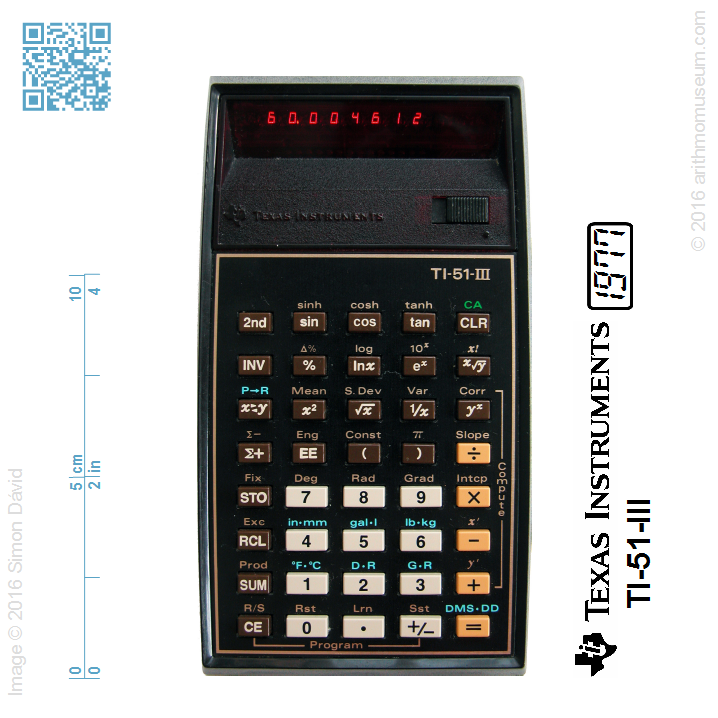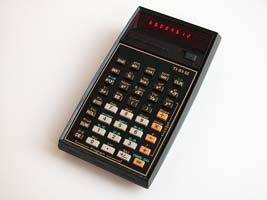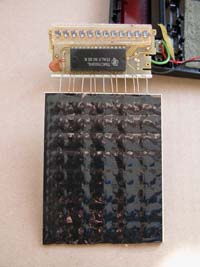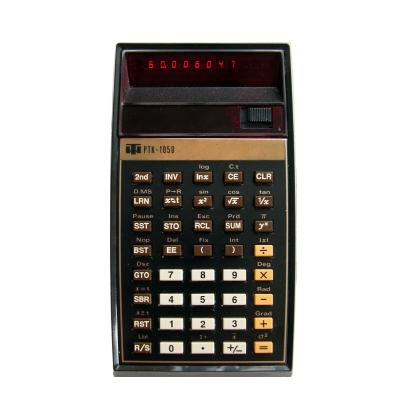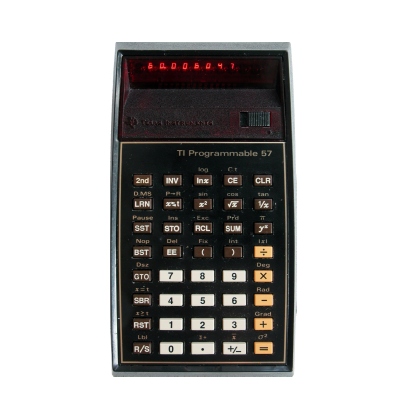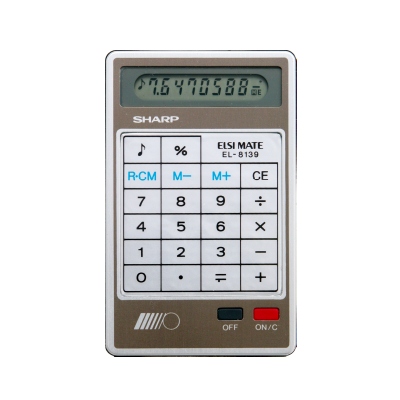Texas Instruments TI-51-III
The machine basically has 10 memory registers, but each memory register can be converted to store program steps, so programs up to 32 steps can be written without any branching or conditional instructions. As a scientific calculator, its notable additional features were linear regression calculation, hyperbolic functions, full register arithmetic, and conversions between metric and US units.
Like the contemporary TI-57, this machine also has a very simple design: the only calculator circuit is located on a common printed circuit board with the LED display, connected to the usual Klixon keyboard and a power switch. This solution has resulted in significant cost reduction in manufacturing these machines.
A smaller quantity of the TI-51-III variation was also marketed in 1980 by the Hungarian Híradástechnika Szövetkezet (Telecommunications Cooperative) with model number PTK-1030, but due to its limited capabilities it was replaced in the same year by the Texas Instruments TI-57, as PTK-1050 model.
| Manufacturer: | Texas Instruments (USA/Italy) |
| Mfg. date: | 1977-81 |
| Size: | 8×14,7×3,4 cm |
| Weight (ready for operate): | 187 g |
| Type: | programmable scientific |
| Capacity: | 8/8+2 digits (input/display) 11+2 digits (internal precision) |
| Operating logic: | AOS |
| CPU: | Texas Instruments TMC1503NL |
| Registers: | 3 standard (with saving the pending operation) 1 constant (with saving the pending operation) 9 bracket (with saving the pending operation) maximum of 10 memory (with aritmetic) |
| Features: | %calculation with percent +/-change sign (direct entry of negative numbers) RVexchange registers (X-Y) Ffloating-point notation Fixfixed-point notation: the listed decimals can be chosen (0-7) Sciscientific (exponential) notation Engengineering notation Sqrsquare root x2square pivalue of pi (3.1415..) can be recalled 1/xreciprocal trigtrigonometrical functions (sin, cos, tan and inverses: arcsin, arccos, arctan) hyphyperbolic functions (sinh, cosh, tanh and inverses: ar sinh, ar cosh, ar tanh) DMS-DDconversion of decimal and sexagesimal numbers logexponential and logarithmical functions (10- and e-base) yxraising to power SDone variable statistics: calculating mean and standard deviation LRtwo-variable statistics: linear regression P-Rconverting coordinates between rectangular and polar systems n!factorial |
| Display: | 12 digit LED |
| Power: | Texas Instruments BP-7 battery pack (replaceable) |
| Programming method: | merged keystroke-programmable |
| Program capacity: | maximum of 32 steps |
| Test results: | trigonometry:result of sin-1(cos-1(tan-1(tan(cos(sin(60°)))))), reference value: 60. 60.004611995 exponential:result of 0.999160000, reference value (first 14 digits): 3.0068804206375×10-70 3.006896579E-70 |
Using the calculator
The TI-51-III (TI-55) can be used identically to other scientific calculators, so we will describe only programming functions.The machine has 10 memory registers: to store a number to the desired register (0-9), press STO and the corresponding number key. Similarly, recalling the stored value from a register, press RCL; to exchange the memory contents with display register, press 2nd Exc; to multiply the display with the memory (M+), press SUM; to subtract from the memory (M-), press INV SUM; to multiply, press 2nd Prod; to divide, press 2nd INV Prod. After these keystrokes, the corresponding number key must be keyed.
The programming (learn) mode can be accessed by pressing 2nd Lrn. In this mode, the display shows the displayed step number (program counter), and the code(s) of the stored instruction(s) in that step. The codes follow the usual row-column numbering scheme: the first digit represents the row of the corresponding key, and the second digit the column number. Codes have their column number greater than 5, and the 0 for 5th column, identify the sequence of keys that can be obtained by pressing the 2nd prefix key. The INV key is stored always in a separate instruction/step. For example: 65 is the code for - (subtraction), 20 is for the second function of the last column of the second row (2nd x!). The number keys have their number values instead of their row-column codes.
We can only move forward one step in the displayed program by pressing2nd Sst. To show a previous step, we must first exit the programming mode (2nd Lrn), then resetting the program counter (2nd Rst), enter again the programming mode (2nd Lrn), and finally, move forward to the desired program step by pressing 2nd Sst repeatedly.
To start the program, press 2nd R/S. Such instruction written in the program causes to stop the running program. The program stops running even if an error appeared during the calculation. The 2nd Rst instruction resets the running from the first step (step number 0). The latter also provide an opportunity to write loops.
